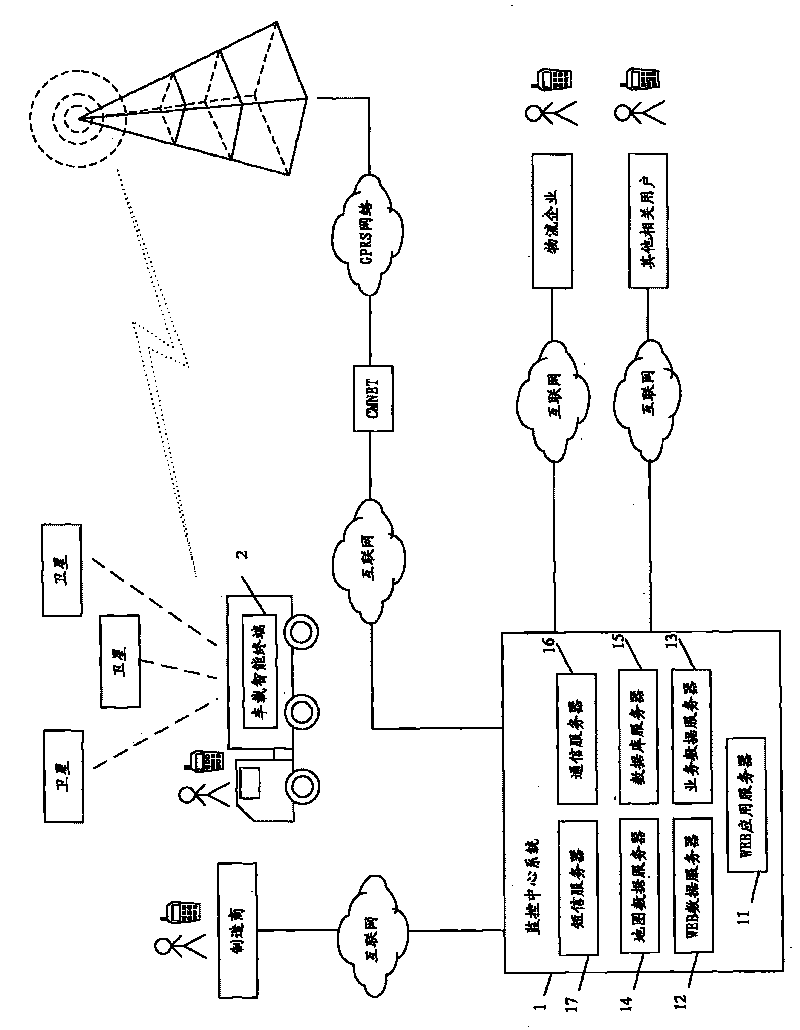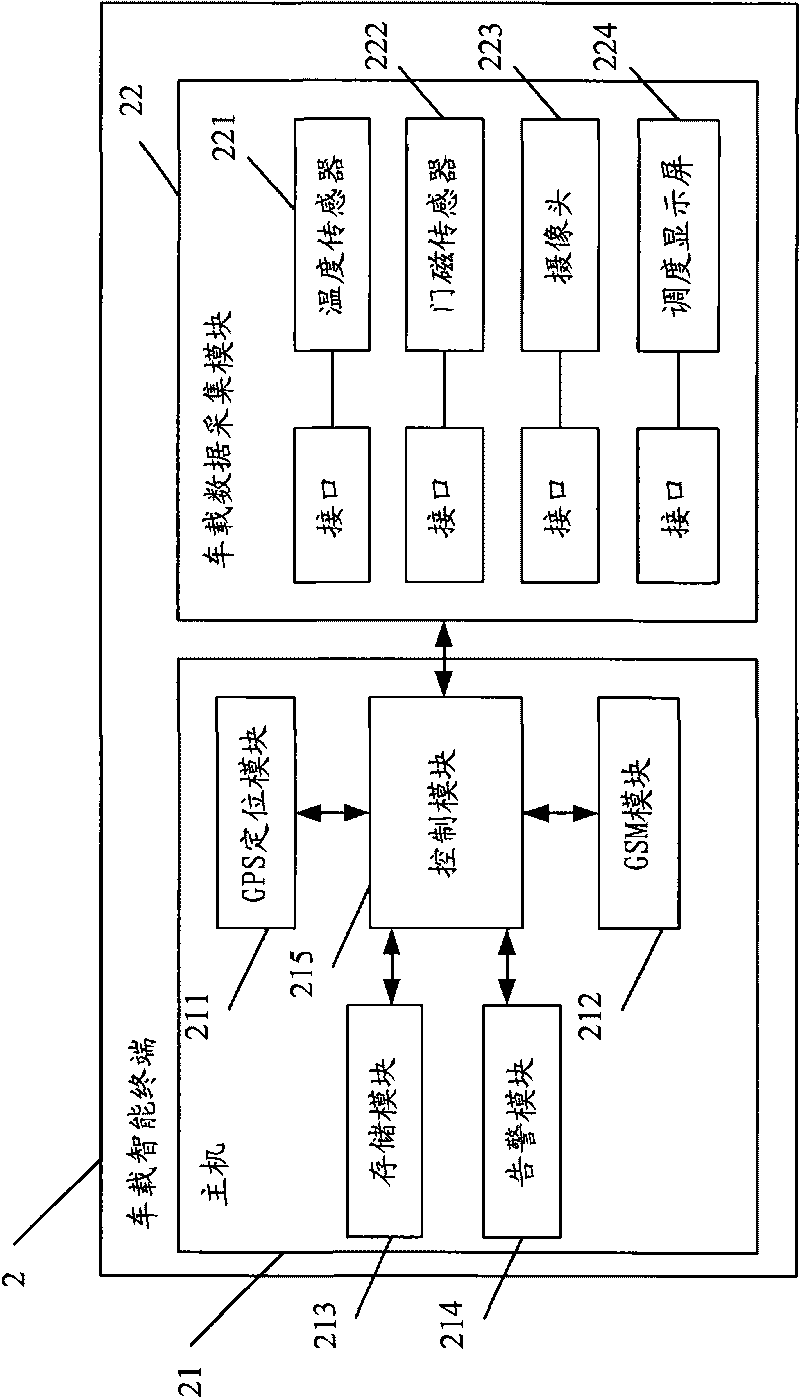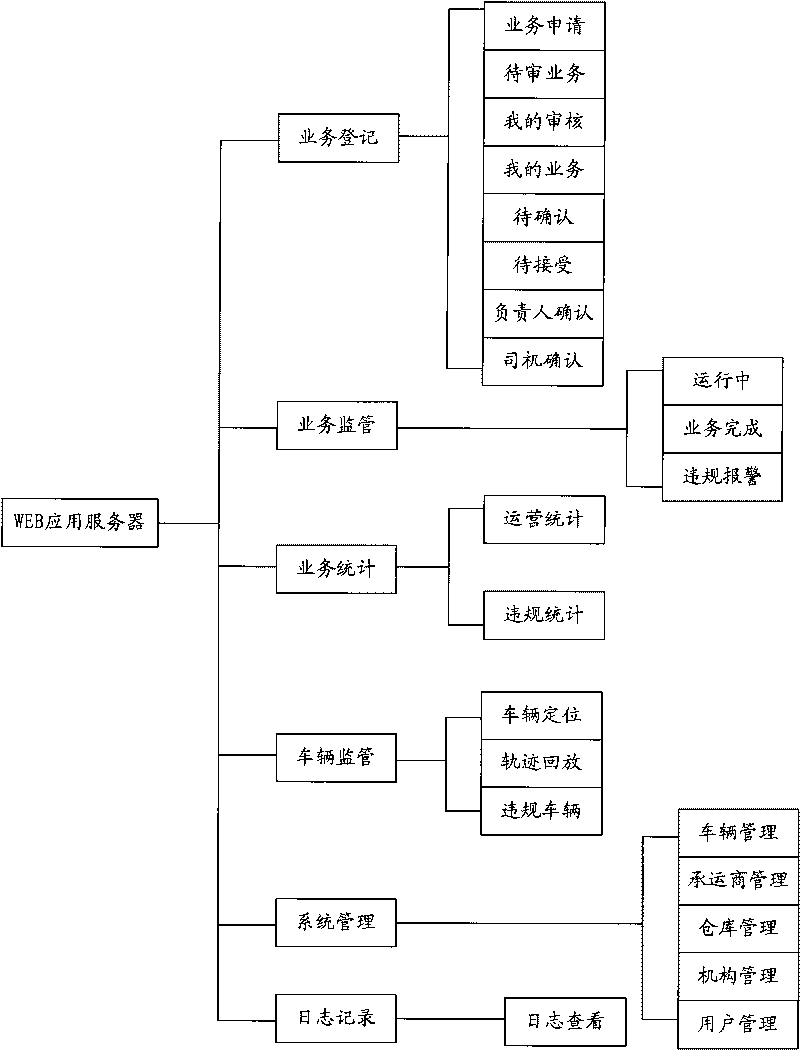Cold-chain logistics management system
A management system and cold chain logistics technology, applied in logistics, transmission systems, data processing applications, etc., can solve problems such as the inability to collect vehicle temperature in real time, and the inability to set refrigeration temperature, so as to improve work quality and reduce management and operating costs. , to avoid the effect of prevarication
- Summary
- Abstract
- Description
- Claims
- Application Information
AI Technical Summary
Problems solved by technology
Method used
Image
Examples
Embodiment Construction
[0020] The cold chain logistics management system of the embodiment of the present invention will be described below with reference to the accompanying drawings.
[0021] figure 1 Shown is the overall structure diagram of the cold chain logistics management system of the present invention.
[0022] The cold chain logistics management system is mainly composed of a monitoring center system 1 and a vehicle-mounted intelligent terminal 2.
[0023] The monitoring center system 1 and the vehicle-mounted intelligent terminal 2 are linked together through the GPRS network and the Internet.
[0024] The architecture of the monitoring center system 1 is based on the B / S application mode (Browser / Server). The monitoring center system 1 sets up a server and connects with the client through the Internet or other communication networks. The client is set at the system user, and the system user may be the manufacturer of the item, the logistics company or other related users such as the s...
PUM
 Login to View More
Login to View More Abstract
Description
Claims
Application Information
 Login to View More
Login to View More - R&D
- Intellectual Property
- Life Sciences
- Materials
- Tech Scout
- Unparalleled Data Quality
- Higher Quality Content
- 60% Fewer Hallucinations
Browse by: Latest US Patents, China's latest patents, Technical Efficacy Thesaurus, Application Domain, Technology Topic, Popular Technical Reports.
© 2025 PatSnap. All rights reserved.Legal|Privacy policy|Modern Slavery Act Transparency Statement|Sitemap|About US| Contact US: help@patsnap.com



